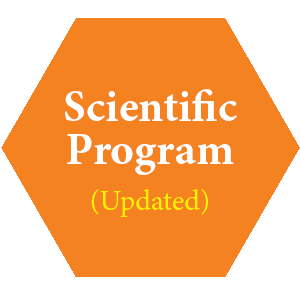
Melvin Miranda
Manila Central University College of Nursing, Philippines
Title: Nursing care management learning settings in relation to student’s readiness to learn: A basis for an improved instructional program in nursing
Biography
Biography: Melvin Miranda
Abstract
The purpose of the study is to determine the Nursing Care Management Learning Settings in Relation to Student’s Readiness to Learn: A Basis for An Improved Instructional Program in Nursing. The researcher assessed the BSN III students’ readiness to learn in NCM 103 in terms of the four types of readiness; physical readiness, emotional readiness, experiential readiness and knowledge readiness. The researcher tested if there is a significant difference in the BSN III students’ readiness to learn the NCM 103 subject in classroom, skills laboratory and clinical area.
The researcher utilized Descriptive Comparative Study determining the differences between the standard level of readiness set by the area chairs and the actual level of readiness of the students in terms of the four types of readiness mentioned. Out of the one hundred thirty five (135) students, which is the total population, twenty seven (27) were taken as respondents. 27 BSN III students represents 20% of the total third year population, thus, simple convenience sampling is used. The researcher simply took the available students as respondents of the study who are enrolled in NCM 103 and on the entry-level competency. The respondents were given a self-constructed open ended questionnaire which was derived from the book of Susan Bastable “Nurse as Educator.” The questionnaire is derived from the explanation contained in this material which was conceptualized by Cheryl Lichtenthal Harding. Data were gathered and processed with statistical treatment with percentage, weighted mean, descriptive rating, analysis of variance and t-test to determine the level of significance using 0.05 critical value. Demographic data showed that the student respondents are on their early adult specifically 71% are 21 years old mostly female and single. Result showed that the readiness to learn of the BSN III students in the classroom is slightly ready; in the skills laboratory is slightly ready; and in the clinical area is moderately ready. Furthermore, it revealed that there is no significant difference in the BSN III students’ readiness to learn the NCM subject in the classroom lecture, skills laboratory and clinical area.The relationship between the standard level of readiness set by the Area Heads and the actual level of readiness of the students in NCM 102 learning settings showed that there is a significant difference between the standard level of readiness set by the area heads and the actual level of readiness of the students in the classroom lecture; there is a significant difference between the standard level of readiness set by the area heads and the actual level of readiness of the students in the skills laboratory lesson; and there is a significant difference between the standard level of readiness set by the area heads and the actual level of readiness of the students in the clinical area. The implication of the study is to propose an instructional program in nursing to improve nursing student’s competencies which may focus on the following measures: 1.) Informing the concerned of the results the study on readiness to learn; 2.) Identify individual strengths and weaknesses; 3.) Plan the instructional program based from the identified areas of strengths and weaknesses such as instructional objectives, learning content, teaching strategies, learning resources, evaluation measures and tools. Whereas in the College of Nursing/educational institution, results of the study suggest that they need to give emphasis on the following: 1.) classroom management, 2.) strengthening the roles of nurse educators, 3.) effective and efficient monitoring of students’ academic performance, 4.) coordination with the guidance center of the institution to facilitate student’s assistance and strengthening of support system.

